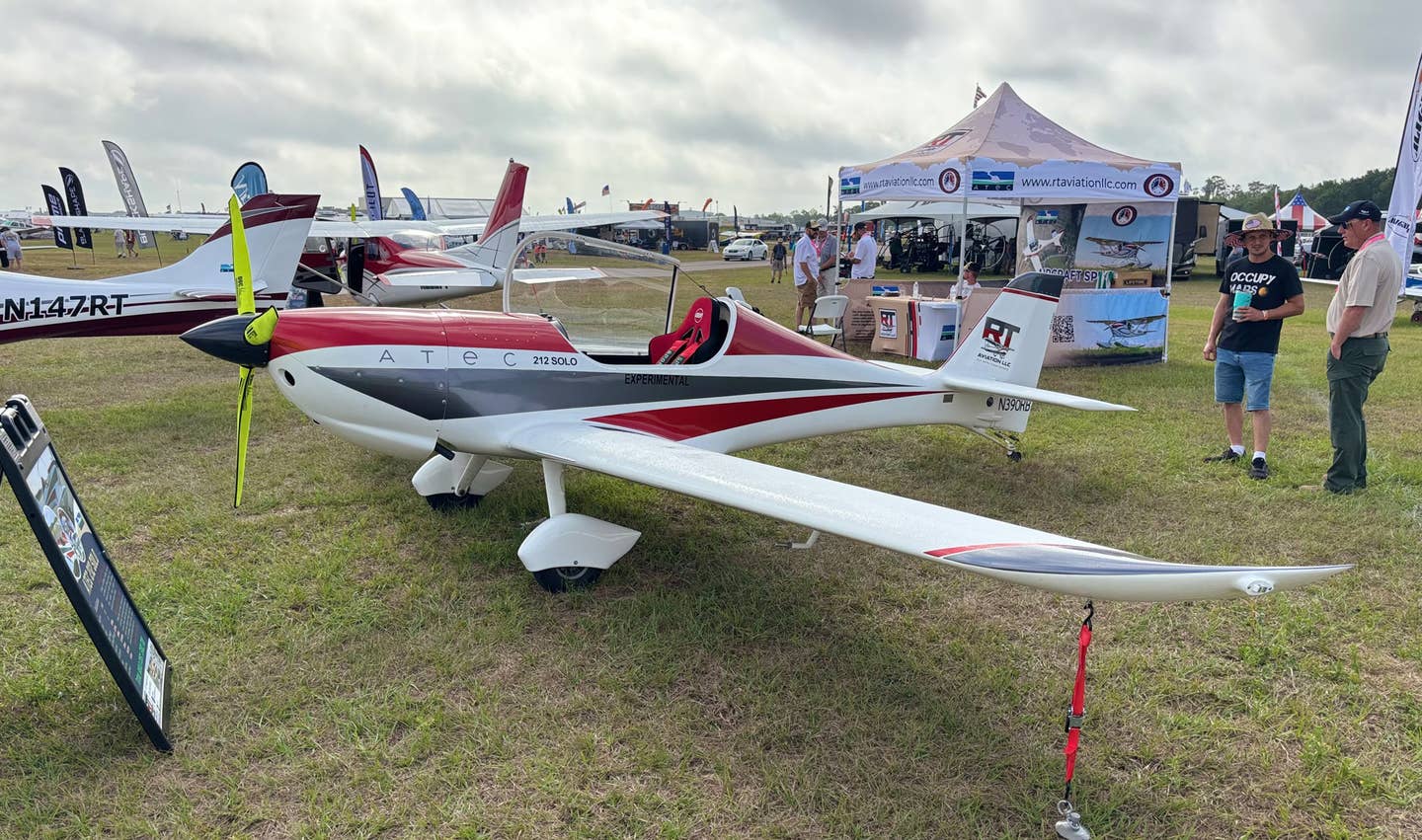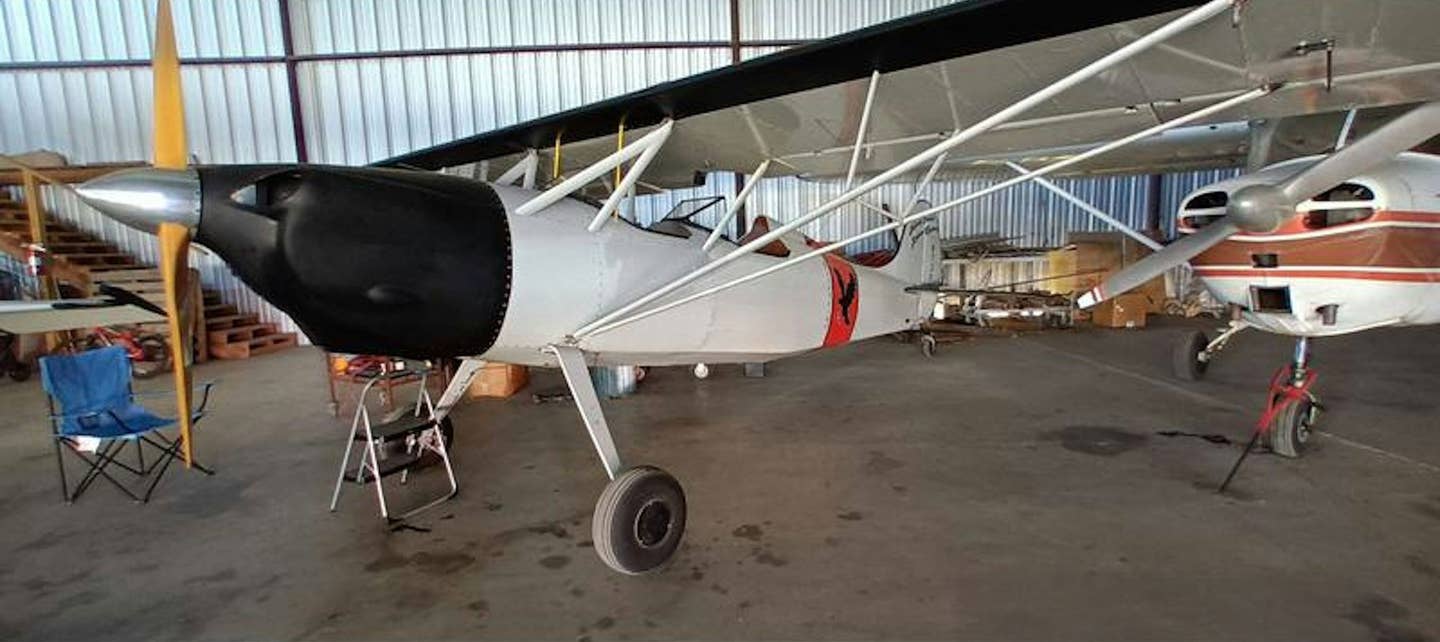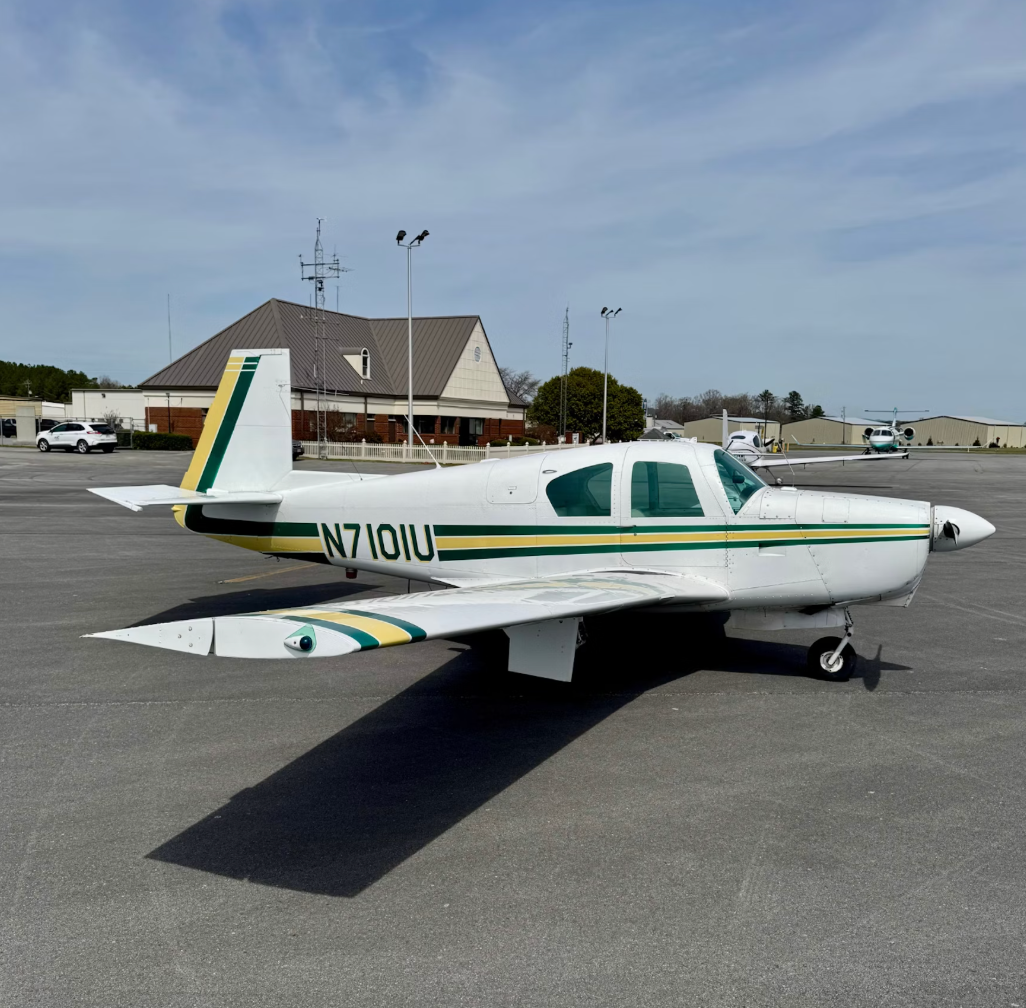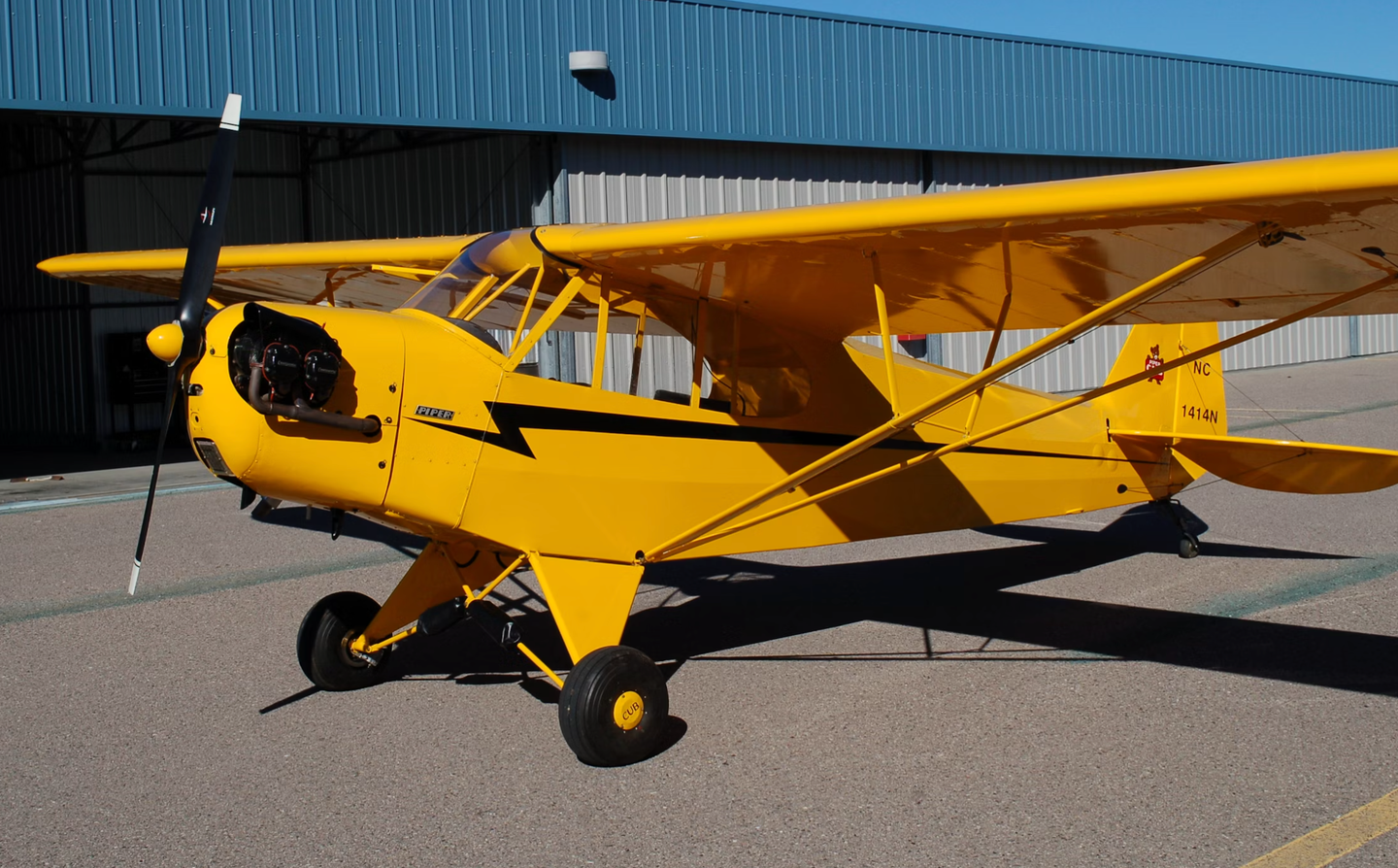The Marvelous Mooney M20
These airplanes are associated with two things, speed and efficiency. Here’s how they do it.
Some airplanes are ubiquitous and ordinary, attracting mostly temporary followers until replaced by something more desirable. Others ignite fires of passion upon their introduction, dying down to smolder after the initial blaze. And then there are the true cult airplanes, those for whom devotees never waiver in their loyalty.
Put down the plucky little Mooney M20 series as belonging in the latter category. Mooney owners truly believe in their plane, and they stand by it through thick and thin---and there's been a lot of thin in Mooney's history. Those of us who enjoy rooting for the underdog have certainly been kept busy over the company's checkered times.
How did Mooney Aircraft (under various corporate names) manage to survive over its 70-odd years of existence? For one thing, it has always built a niche product, filling a need mostly unmet by competitors, some of whom attempted to field a Mooney-like airplane while they concentrated on a larger line of cookie-cutter products. Mooney Aircraft never waivered; it knew who it was, and it stayed on message.
Marvelous Mooney 1
Secondly, Mooney was always one of the most responsive manufacturers in the industry when it came to modifying its airplanes to satisfy a customer's wishes. Somehow, someway, Mooney would find a means of shoehorning in a different radio or instrument or otherwise make the airplane fulfill a requirement. You want electric landing gear or flaps? You got it. You want a turbocharger? Here it is. In-wing radar? Sure, we can do that. There seemed to be nothing Mooney wasn't able to certify to make a customer happier.
That said, the basic recipe didn't change. Mooney's trademark tail stayed stubbornly erect, defying swept-fin convention, and the bulletproof one-piece wing still carried the (a-hem) compact steel-tube fuselage cage. What Albert Mooney established in the beginning has served the company's various owners quite well; efficiency above all, getting the most miles-per-gallon out of a fast personal flying machine.
History of the Mooney M20
For good or for ill, the Mooney story is a long and interesting one. After working for various airplane companies in the heady 1920s, the depressed 1930s, and the wartime 1940s, Al Mooney, along with his brother, Art, once again went into business for himself, founding Mooney Aircraft, Inc., in Wichita in 1948. Its only product was a single-seat retractable-gear model, the M18 Mite, originally to be powered by a Crosley car motor; like most automotive conversions, it didn't work until a proper Continental A-65 engine was fitted. The innovative little Mite soon attracted considerable attention, in the limited way of single-place airplanes.
As Mooney's proof-of-concept, the M18 was built from 1949 to 1955, showing that a wooden-construction wing and tail, with a welded-steel fuselage frame, offered strength and lightness that could be incorporated into a four-seat variant. The first such M20 flew on Sept. 3, 1953. At that point, the company had moved to Kerrville, Texas, in the state's rolling hill country, a fertile transplanting that became one of the key ingredients of the firm's survival over the years.
Al Mooney, like most visionary designers, wasn't a practical businessperson, so he was no longer with the company by late 1955. Two Midland, Texas, investors, Hal Rachal and Norm Hoffman, had seen the M20's potential, and with their help, the airplane was CAA certified on Aug. 25, 1955. The company sold only 10 airplanes that year, but it was a start, and sales steadily grew. The new four-seat speedster was marketed as the "Mooney Mark 20."
History of the Mooney 2
Starting with a sleek retractable-gear design, Mooney had installed the most sophisticated small power package of the mid-1950s, Lycoming's 150-hp O-320 engine with a Hartzell constant-speed propeller, barking through unmuffled augmenter exhaust tubes under the belly. The cabin's width was reportedly based on Beech Bonanza measurements, but other dimensions were compromised. The tail tilted in its entirety for pitch trim, replacing a speed-robbing elevator trim tab, its trailing edges slanted forward to match the wing's planform. The wing section was a laminar-flow profile, highly efficient but demanding smooth surfaces; hence the plywood skin and doped-fabric finish. The fuel system employed a three-tank setup, using two 17.5-gallon wing tanks and a 14-gallon aft fuselage tank. The landing gear was retracted and extended via a beefy and foolproof manual lever.
By 1958, Lycoming had developed the 180-hp O-360, a natural fit for a follow-on Mark 20A, approved on Feb. 13, 1958, and briefly produced concurrently with the 150-hp M20. Cowl flaps replaced the noisy augmenter-exhaust cooling, but the wood wing and tail remained standard through 1960, at which point new management under Ralph Harmon dictated a change to all-metal construction. Saddled with recurring AD inspections, few wood-component Mooneys survive at this point out of roughly 600 built.
Going Full Metal
Once the furor over Harmon's abandonment of Al Mooney's wood medium died down, sales of the new M20B Mark 21 took off. It was certified on Dec. 14, 1960, retaining the M20A's manual flaps but using a two-tank wet-wing fuel system of 48 gallons; gross weight remained at 2,450 pounds.
An improved M20C was certified on Oct. 20, 1961, bringing a manually pumped hydraulic flap system and a welcome 125-pound boost in gross weight. Fuel capacity was increased to 52 gallons in 1964 when flush gas caps replaced the recessed Thermos-style caps. In an attempt to broaden the product line into a simpler training-plane market, a fixed-gear M20D "Master" was approved on Oct. 15, 1962. The Master could be readily converted into a C-model if desired, and most of the 161 M20Ds built for the 1963 through 1965 model years are now M20Cs.
With the availability of Lycoming's 200-hp IO-360 engine, the hot-rod M20E "Super 21" (later called the Chapparal) was certified on Sept. 4, 1963, and a 10-inch-longer M20F "Executive" model was approved on July 25, 1965 (although not produced until 1967), using the same engine but with another 165 pounds of takeoff weight and an additional 12 gallons of fuel capacity. It was about this time that the original arched window shape was changed to a rectangular contour. Never one to leave a gap in the product line unfilled, Mooney brought out an M20G "Statesman," certified on Nov. 13, 1967, and matching the M20C's 180-hp carbureted engine with the M20F's lengthened fuselage.
Expensive Attempts
During all these years, Mooney Aircraft dabbled and dallied with projects that might improve its market position, including a proposed "Mark 22" twin based on the M20A, then a pressurized-cabin M22 Mustang single, which actually was certified; 29 were built from 1967 to 1970, but it was a financial disaster. A joint venture with Mitsubishi to assemble and sell the MU-2 turboprop failed, as did the company's acquisition of the Alon Aircoupe (Ercoupe) in 1967---it converted the eccentric Aircoupe into an M10 "Cadet" trainer, complete with a proper Mooney tailfin. The move resulted in few sales.
By 1969, the company was in financial trouble, leading to bankruptcy; it was bought in March 1969 by American Electronics Labs, which sold it to FBO chain Butler Aviation in December 1969. Butler had visions of creating an aircraft manufacturing empire by combining Mooney with Ted Smith's struggling Aerostar twin line. Mooney's airplanes acquired a tailcone stinger and a forward-protruding appendage on the top of the fin (the "Butler Buttonhook") and were henceforth referred to as "Aerostars." By early 1971, the Mooney plant was closed. Republic Steel Corp. bought the company in 1973, and production resumed in January 1974 once again as Mooneys, building the M20C, M20E and M20F.
Republic Steel brought in Roy LoPresti, who had cleaned up the Grumman Traveler to create the Tiger and Cheetah, to perform some aerodynamic magic on the Mooney Executive. It was a target-rich environment, with a blunt nose cowling, a straight-up "battering ram" windshield and considerable drag-producing protuberances under the wing. Through a series of nip-and-tuck smoothings, the staid old Mooney M20F Executive became the M20J, designated the "201," to reflect its top speed in miles-per-hour. The Al Mooney standard of one-mph-per-hp was back, at least as measured in the brochure.
Resurrection Of The Mooney M20
Certificated on Sept. 27, 1976, the first 201s were 1977 models. Gross weight was raised to 2,740 pounds (raised to 2900 pounds in later models), and fuel capacity was now 64 gallons. The windshield was carefully slanted, and the cowling was reshaped; the retracted main gear was faired in and hidden behind partially enclosing doors, and the underwing flap hinges were streamlined. Sales took off as the new model 201 revitalized the Mooney line. With LoPresti's touch, the M20J came close to the 201-mph mark, and as added refinements came along, like sculpted wingtips in 1981, it earned a "205" designation for the 1987 and 1988 model years.
After 1978, the entry-level M20C Ranger was discontinued, marking the end of the short-body Mooneys. In 1979, a new market was established with the M20K as the model 231, blending the M20J airframe with a 210-hp turbocharged six-cylinder Continental IO-360, the first time something other than a Lycoming powered an M20.
In 1984, Republic Steel was acquired by LTV Corp. and Mooney was put up for sale, eventually to be bought by Eurlair, a French charter company and Mooney dealer. By 1986, the 231 had become the 252, benefiting from intercooling, electric cowl flaps and a 28-volt electrical system. Meanwhile, the 201 was joined by a 201 L/M ("Lean Machine") cost-reducing package for 1985, while the deluxe version was transformed into the 205 SE special-edition for 1987. An AT advanced trainer was fielded in 1989; the 201/205 was renamed the MSE in 1990.
The M20J finally went out of production after 1998, the last of the classic Mooneys powered by four-cylinder Lycoming engines. The M20K, as the TSE, persevered through 1990, supplanted by the 1989 introduction of the M20M TLS, codenamed "Turbo Lycoming Sabre" during its development. But wait; the M20K returned with a 220-hp version of the IO-360 Continental in 1997 and 1998, sold as the "Encore."
Muscle Plane Mooneys
No roundup of the Mooney line would be complete without mentioning the ill-fated M20L PFM, built in 1988 and 1989. The PFM, for Porsche Flugmotoren, was an attempt to merge the Mooney airframe with a 217-hp six-cylinder Porsche automobile powerplant. It was to be a high-tech computer-operated marvel with single-lever power management, but it proved to be too heavy and low on power to meet traditional Mooney owner expectations. Only 41 were built, few actually being sold. But the M20L's airframe, stretched by 18 inches to accommodate the Porsche engine, did serve to become the foundation of the M20M and M20R, the "super Mooneys."
The M20M TLS was the first of the modern big-engine Mooneys; attaching a 270-hp TIO-541 to the airframe turned the Mooney into a real rocket. In 1994, it was joined by a non-turbocharged, but equally potent, M20R Ovation model, using a 280-hp IO-550 big-bore Continental engine. The M20M TLS became a "Bravo" version in 1997. An M20S Eagle variant came along in 1999, using a 244-hp Continental IO-550G engine.
Look Out, Here It Comes Again
All of these model manipulations were again affecting Mooney Aircraft's fortunes, leading it into bankruptcy in July 2001. Acquired by Advanced Aerodynamics and Structures, Inc., in 2002, Mooney was sold to Allen Holding Finance in May 2004 but then was reacquired by ASSI (as Mooney Aerospace Group, Ltd.) in December 2004. The introduction of Garmin G1000-fitted Ovation 2 GX and Bravo GX glass-cockpit models soon followed, and in April 2006, the M20TN Acclaim was unveiled.
However, in June 2008, the economic recession had an effect. By November, production was shut down, and only fleet-support workers were in the plant. Production resumed in April 2010, but that attempt wasn't successful. In October 2013, a Taiwan-based investor group bought Mooney, promising to restart production again, accomplished in February 2014.
In 2016, Mooney received FAA approval for the M20U Ovation Ultra and M20V Acclaim Ultra, incorporating a new left-side entrance door, in addition to the original right-side portal. Sales continued to be slow, and in November 2019, the plant was again shut down, reopening a month later but soon reclosing.
At present, a new ownership group, under US Financial LLC, has taken over and is focused on maintaining support of the current fleet of 7,000 Mooney aircraft. Hopefully, the plucky little Texas plane maker will again rise from the ashes and produce Mooneys worthy of the historic legacy.
Characteristics
Mooney airplanes generally fall into the "little Mooney" and "big Mooney" categories, with many, many sub-divisions. The little versions are the original designs with four-cylinder Lycoming engines, the big variants being the ones powered by six-cylinder big-bore Lycomings and Continentals. Always focused on efficiency and speed, Al Mooney intended to exceed a top-speed criterion of 1 mph per installed horsepower. The single-seat Mite would do 130 mph or better on 65 hp, and the Mark 20 could make 160 mph with 150 hp. The 180-hp models didn't quite hit the mark, producing about 165 mph in cruise, and the 200-hp versions were only slightly faster---until the M20J 201 came along. The "muscle plane" Mooney M20Rs and subsequent models easily blow past 200 mph with their 270/280 hp engines, but they burn prodigious amounts of fuel in the process.
The Mooney wing is a legendary feature, built as a single all-metal unit since the 1961 M20B, incorporating a continuous tip-to-tip spar. Its root airfoil is a NACA 632-215 section, modified to a 641-412 at the tips. To preserve laminar flow, flush-riveting was employed until well aft of the main spar; beginning in 1968, cost containment measures eliminated some of the flush riveting, so the Mooneys from 1967 and earlier are reportedly 5 mph faster than 1968 siblings.
The fuel system in all the metal-wing Mooneys utilizes sealed fuel bays, initially holding 48 gallons but increasing to 52 gallons total after 1963, until the M20F Executive brought capacity to 64 gallons. Big-engine models hold 95 gallons. An aftermarket Monroy Aerospace mod can add 18 gallons per wing. As the sealer ages, it's not uncommon to have leaks develop, so buyers of older Mooneys need to watch for stains under the tanks. O&N Aircraft Modifications has approval to replace the wet wings with bladder tanks holding 54.8 usable gallons.
Gear Systems
The landing gear system uses stacked rubber cushions for shock absorption, a simple trouble-free method until time catches up with it, requiring disc replacement. Check for elasticity by watching for the gear to rebound after unloading. Pre-1981 Mooneys had a supplemental automotive-type shock absorber on the nosegear, eliminated in later models.
Prior to 1967, when electrical actuation of the landing gear became an option, pilots used a beefy lever between the front seats to put the wheels up and down, a perfectly reliable process as long as the system's joints and assist springs were maintained properly. Pilots of older Mooneys like to show off their expertise by snapping the gear up right after liftoff in front of a watching crowd.
The electrically driven gear system, which became standard in 1969, works equally well; to prevent inadvertent retraction on the ground, an airspeed lockout inhibits the gear motor until reaching about 65 knots. Normal squat switches wouldn't work with the stiff rubber-disc gear. An override control permits retraction if the lockout balks. Emergency extension was done by turning a hand crank; in 1978, it was changed to a ratcheting handle mounted in the floor behind the front seats.
The wing flaps extend to 33 degrees and are electrically actuated in later models. Before the M20C, a manual flap handle under the panel was slipped into notches for half and full travel, which was only 21.5 degrees. This was changed to a hydraulic hand pump for 1962; a few strokes put the flaps down, and a pressure-dump valve allowed them to retract. Electric flaps were introduced in 1969.
The famous "backward" tail pivots for trim, vertical fin and horizontal stabilizers moving as one unit. All of the Mooney controls are driven by pushrods instead of cables running over pulleys, so there's no slop in the circuits. In an effort to enforce safety by preventing loss-of-control in-flight, all Mooneys built from 1965 to 1977 had "positive control" installed, a full-time vacuum-driven wing-leveler autopilot that was both helpful and annoying. One depressed a thumb-button to override the PC for turns; otherwise, the airplane would try to roll itself level. A stout rubber band could defeat the constant co-pilot, or the override button and valve could simply be pried out of the control yoke and tossed into the map pocket.
The Mooney fuselage incorporates a welded steel-tube cage around the cabin area, to which a conventional semi-monocoque tailcone is attached. A 120-pound capacity baggage compartment is reached by opening a swing-up door on the right side of the fuselage, its sill at chest height due to the cabin structure. The right-hand cabin entrance door is reached by a short step onto the wing-walk; the flap is placarded "no step." Pre-M20J Mooneys had a retractable assist step, cranked up by twisting 2.5 turns of a wheel on the cabin sidewall, but a streamlined fixed step was used after the 201 was introduced.
The older Mooneys with straight-up windscreens had removable access panels in the upper boot cowl that facilitated maintenance on radios and instruments. The tight engine cowling requires screwdriver work for removal, and the compact engine compartment is not known for ease of maintenance. To gain a bit more performance at altitude, a "power boost" control fitted to the Super 21 and later models bypassed the air filter with ram air when actuated, gaining another inch or so of manifold pressure. It, plus closed-up cowl flaps, maximized speed in cruise. The ram air feature was discontinued in the 1990s.
Flying A Mooney M20
I've flown just about all the metal-wing Mooneys, including the Porsche-powered PFM, and have never found them difficult to operate. They are stable in IMC, responding immediately to control inputs and predictable when maneuvered. However, Mooneys, as complex, high-performance airplanes, do require study and practice to learn how best to use them.
Prior to 1969, the top of the airspeed indicator's green arc was set at 150 mph, so the 200-hp models would cruise in the yellow caution range at low altitude; the Vno was raised to 175 mph in 1969. Mooneys don't like to slow down; on some models, maximum gear-down speed is 120 mph (104 knots), and the flaps-extended limit is 125 mph (109 knots). Later models of the M20J 201 carried a 132-knot gear-extension limit, and there is a 107-knot limitation for gear retraction. Even the big-engine M20M has to slow below 140 knots to put the gear down (it can fly up to 165 knots once the gear is extended), so it's no wonder Precise Flight speed brakes are almost always installed.
The point is, airspeed control is an essential element of Mooney flying. Gear up and power off, the airplanes have an 11.46-to-1 glide ratio with the propeller windmilling in high pitch. The 167 square feet of wing area sits well into ground effect, so when the M20J manual says to use 65 to 71 knots for landing approach, pay attention. Extra speed increases landing distance exponentially. Flap extension or retraction requires immediate trim adjustment.
Boarding a Mooney, particularly the short-body models, is done by loading the pilot first, sliding the co-pilot seat forward, installing the rear passengers, and then sliding the co-pilot seat aft to seat that person. The door is latched AFTER being pulled closed; slamming it doesn't work. With the short-cabin Mooneys, it's possible to reach back and push on the baggage compartment door to check that it's latched.
Settling In
If you like the looks of your feet, take note of them before sliding your seat forward; your legs disappear under the panel when flying a Mooney. The seating is comfortable, just restricted. In older Mooneys, the floor-mounted fuel selector is beneath the pilot's seat, requiring it to be slid back to reach the valve. Otherwise, all controls fall nicely to hand; nothing is far out of reach in a Mooney. From 1969 to 1977, Mooneys were fitted with quadrant-style power controls before returning to push-pull knobs.
Starting is accomplished as with most low-wing Lycoming-powered airplanes; for some reason, older fuel-injection Mooneys give me more balked starts than just about any other airplane, but following the handbook will generally produce results. Taxiing is straightforward, although some of the longer-body airplanes have restricted forward visibility for us vertically challenged pilots. The nosegear only steers to 14 degrees, so the unbraked turning radius is 41 feet. Because of their short wheelbase, Mooneys tend to rock in a hobby-horse fashion during taxi on uneven surfaces. For small Lycomings, the engine run-up is conducted with regard to a yellow caution range on the tachometer. To avoid overheating, don't linger on the ground with the tight Mooney cowlings.
Up And Away
Takeoff is normally performed with flaps in the 15-degree position. Only a slight rotation is required for liftoff. The gear is retracted at a safe point, followed by the flaps. If flying an old manual-gear Mooney, relax your grip on the yoke while retracting; onlookers will watch for you to bob and weave as you struggle to get the gear up. The procedure is simple enough: The big chrome bar standing straight up under the center of the panel is unlatched, then you switch your grip to thumb-down and pull the handle 90 degrees aft and down to push it into the gear-up latched position, swiveling your handgrip as you go. The secret is to use the inertia of the swing to avoid stopping short of the floor latch. Extension is much easier. Retracting the electric gear is a piece of cake, as long as you have enough airspeed to activate the motor.
Mooneys like altitude, even the normally aspirated ones, so climb high, watching the CHTs and using cowl flaps appropriately. If you engage the "ram air" feature, be sure to include a "ram air closed" box on your pre-landing checklist. At cruise, the airplanes are stable and comfortable, perfect for cross-country travel. The controls stiffen up as speed increases; Mooneys are not sensitive aerobatic machines.
Rein It In
Plan your descent to respect the airspeed limitations as you arrive. Turbocharged Mooneys should be equipped with speed-brakes to allow descending without shock cooling the cylinders. Plan to level off to slow to gear speed as you approach the traffic pattern, adding flaps and trim to stabilize during the arrival. The older small-cabin Mooneys need to be slowed to no more than 80 mph on short final before entering ground effect. The nautical-indicating airplanes will be flown in at 70 knots or less, and the larger big-engine Mooneys require about 80 knots. Don't expect whipped-cream smooth touchdowns from the stiff gear but do respect the nosegear by holding the yoke back.
Flying a Mooney of any vintage is a pleasurable endeavor. Just do your homework to understand the aircraft's systems and find a good Mooney-experienced instructor to show you the best way to fly the airplane. The ownership experience will be enhanced by joining the Mooney Aircraft Pilots Association and finding a good shop that is familiar with working on Mooneys.
Senior Editor Jeremy King shares stories about his Mooney M20 here.

Subscribe to Our Newsletter
Get the latest Plane & Pilot Magazine stories delivered directly to your inbox






